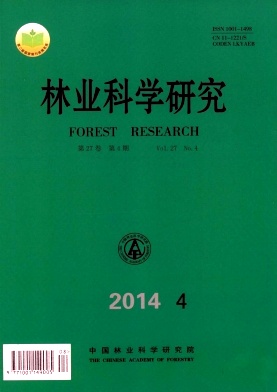|
[1]
|
亢新刚,赵俊卉,刘 燕.长白山云冷杉针阔混交过伐林优化结构研究[J].林业资源管理,2008(3):57-62
|
|
[2]
|
叶 林,李巍巍,马景财.小兴安岭过伐天然林结构特点及经营策略[J].东北林业大学学报,2011,39(10):114-116
|
|
[3]
|
Denslow J S, Guzman G S. Variation in stand structure, light and seedling abundance across a tropical moist forest chronosequence, Panama[J]. Journal of Vegetation Science, 2000,11:201-212 |
|
[4]
|
Nicotra A B, Chazdon R L, Lriatre V B. Spatial heterogeneity of light and woody seedling regeneration in tropical wet forest[J].Ecology, 1999,80:1908-1926 |
|
[5]
|
David R L, Lawrence C B. An analysis of structure of tree seedling populations on a Lahar [J].Landscape Ecology, 1998,13:307-322 |
|
[6]
|
聂道平,王 兵,沈国舫,等.油松-白桦混交林种间关系研究[J].林业科学,1997,33(5):394-402
|
|
[7]
|
Buongiorno J, Dahir S, Lu H, et al. Tree size diversity and economic returns in uneven aged forest stand[J].For Sci, 1994,40(1):83-103 |
|
[8]
|
Lahde E, Laiho O, Norokorpi Y. Diversity-oriented silviculture in the Boreal Zone of Europe[J].Forest Ecology and Manage, 1999,118:223-243 |
|
[9]
|
毛 磊,王冬梅,杨晓晖,等.樟子松幼树在不同林分结构中的空间分布及其更新分析[J].北京林业大学学报,2008,30(6):71-77
|
|
[10]
|
王艳洁,郑小贤.金沟岭林场云冷杉过伐林林分直径结构的研究[J].林业资源管理,2008(6):71-74
|
|
[11]
|
王 飞,代力民,邵国凡,等.非线性状态方程模拟异龄林径阶动态-以长白山阔叶红松林为例[J].生态学杂志,2004,23(5):101-105
|
|
[12]
|
曲智林,曲 松,唐 翠.基于矩阵模型的森林动态模拟与经营[J].东北林业大学学报,2007,35(6):28-30
|
|
[13]
|
亢新刚,胡文力,董景林,等.过伐林区检查法经营针阔混交林林分结构动态[J].北京林业大学学报,2003,25(6):1-5
|
|
[14]
|
武纪成,张会儒,陈新美.金沟岭林场天然混交林空间结构分析[J].西北林学院学报,2008,23(5):178-181
|
|
[15]
|
乌吉斯古楞,王俊峰,郑小贤,等.金沟岭林场过伐林更新幼苗空间结构分析[J].中南林业科技大学学报,2009,29(4):21-25
|
|
[16]
|
韩景军,肖文发,罗菊春.不同采伐方式对云冷杉林更新与生境的影响[J].林业科学,2000,36(专刊):90-96
|
|
[17]
|
李婷婷,王俊峰,郑小贤.金沟岭林场主要森林类型林分更新比较研究[J].林业资源管理,2009(3):81-84
|
|
[18]
|
雷相东,张会儒,李冬兰,等.东北过伐林区四种森林类型的物种多样性比较研究[J].生态学杂志, 2003,22(5):47-50
|
|
[19]
|
马克平.生物群落多样性的测度方法Ⅰα多样性的测度方法(上)[J].生物多样性,1994,2(3):162-168
|
|
[20]
|
马克平,刘玉明.生物群落多样性的测度方法Ⅰα多样性的测度方法(下)[J].生物多样性,1994,2(4):231-239
|
|
[21]
|
马克平,刘灿然,于顺利,等.北京东灵山地区植物群落多样性的研究Ⅲ.几种类型森林群落的种-多度关系研究[J].生态学报,1997,17(6):573-583
|
|
[22]
|
王贵霞,李传荣,许景伟,等.温带森林群落多样性的测度方法比较评述[J].浙江林学院学报,2004,21(4):486-491
|
|
[23]
|
惠刚盈, Klaus von Gadow, Matthias Albert. 角尺度——一个描述林木个体分布格局的结构参数[J].林业科学, 1999, 35(1):37-42
|
|
[24]
|
惠刚盈,K.v.Gadow, 胡艳波,等.林木分布格局类型的角尺度均值分析方法[J].生态学报,2004,24(6):1225-1229
|
|
[25]
|
惠刚盈,Klaus von Gadow, 胡艳波,等.结构化森林经营[M].北京:中国林业出版社,2007
|
|
[26]
|
符婵娟,刘艳红,赵本元.神农架巴山冷杉群落更新特点及影响因素[J].生态学报,2009,29(8):4179-4186
|





 DownLoad:
DownLoad: